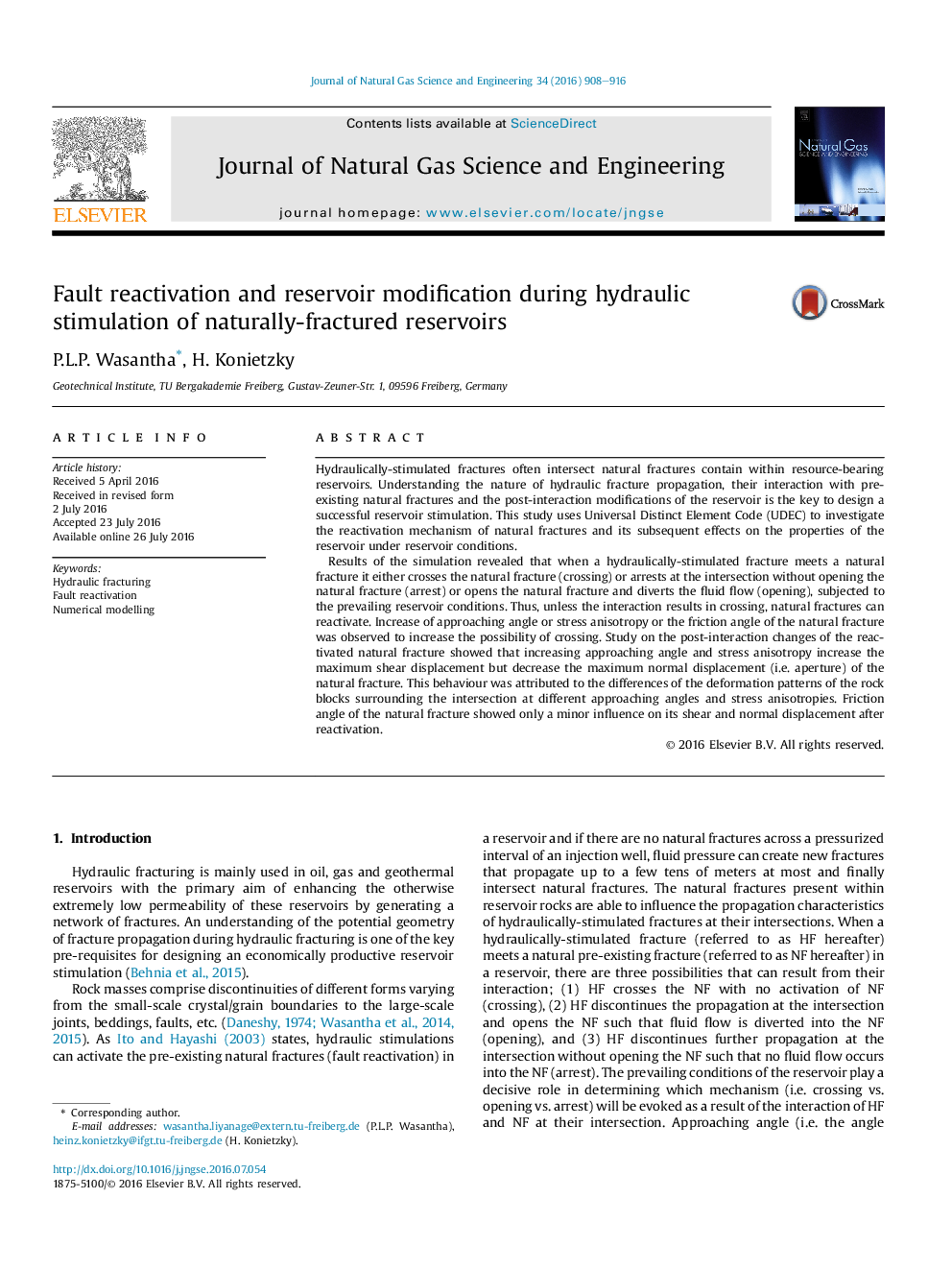| Article ID | Journal | Published Year | Pages | File Type |
|---|---|---|---|---|
| 8128775 | Journal of Natural Gas Science and Engineering | 2016 | 9 Pages |
Abstract
Results of the simulation revealed that when a hydraulically-stimulated fracture meets a natural fracture it either crosses the natural fracture (crossing) or arrests at the intersection without opening the natural fracture (arrest) or opens the natural fracture and diverts the fluid flow (opening), subjected to the prevailing reservoir conditions. Thus, unless the interaction results in crossing, natural fractures can reactivate. Increase of approaching angle or stress anisotropy or the friction angle of the natural fracture was observed to increase the possibility of crossing. Study on the post-interaction changes of the reactivated natural fracture showed that increasing approaching angle and stress anisotropy increase the maximum shear displacement but decrease the maximum normal displacement (i.e. aperture) of the natural fracture. This behaviour was attributed to the differences of the deformation patterns of the rock blocks surrounding the intersection at different approaching angles and stress anisotropies. Friction angle of the natural fracture showed only a minor influence on its shear and normal displacement after reactivation.
Related Topics
Physical Sciences and Engineering
Earth and Planetary Sciences
Earth and Planetary Sciences (General)
Authors
P.L.P. Wasantha, H. Konietzky,
